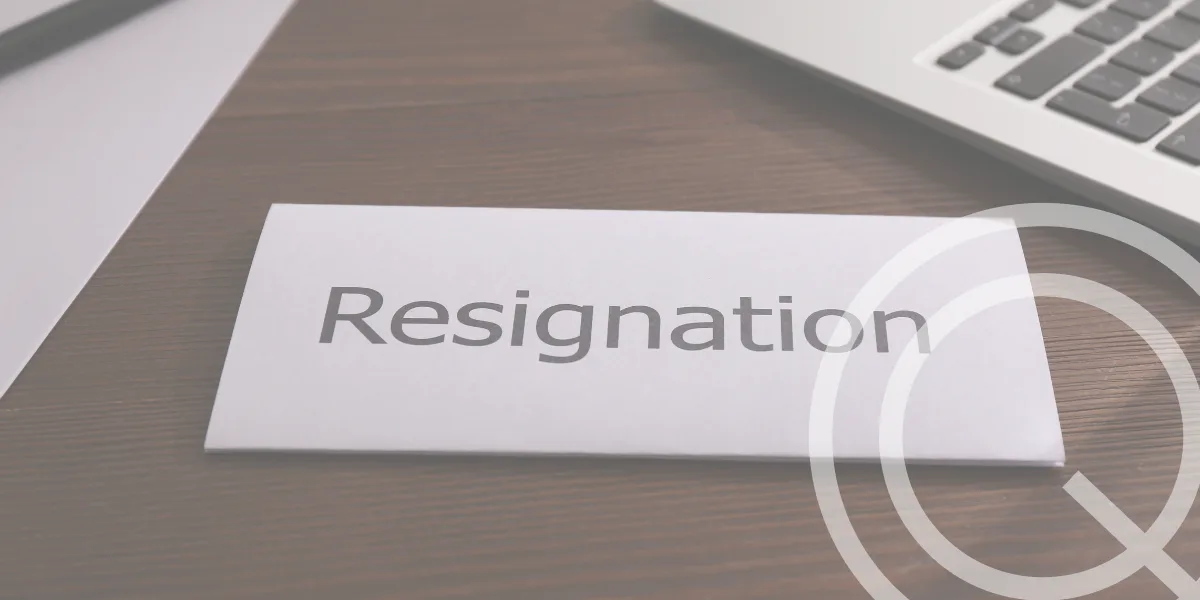KEY TAKEAWAYS:
Recent decisions by Australia’s national Fair Work Commission (FWC) and state-based Tribunals and Commissions highlight five fundamental practices that investigators need to get right to conduct effective workplace investigations.
1| It goes without saying, procedural fairness is paramount and includes:
- acting quickly
- progressing investigations promptly
- holding separate witness interviews
- presenting clearly drafted allegations and particulars
- testing evidence
- fixing any identified omissions before finalising an investigation report
- ensuring the respondent understands the case against them.
2 | From the outset, extreme care is required to ensure an employer claiming legal professional privilege does not unintentionally waive privilege to advice and correspondence with its legal advisors.
3 | Explain the investigation process, any evidentiary limitations and reasoning.
4 | Communicate the outcome of the investigation, particularly to the respondent.
5 | Be aware of specific requirements in enterprise agreements that dictate how workplace investigations should be conducted.
The published decisions of the FWC and state-based Tribunals and Commissions provide essential guidance to those conducting workplace investigations and the decision makers relying on them.
Keep these lessons in mind to avoid adverse scrutiny and minimise the risk of managerial or disciplinary decisions being overturned because of deficiencies in a workplace investigation.
Lesson 1 | Procedural fairness is paramount
What this looks like in practice:
- Act quickly. Be mindful of the potential for lost opportunities to collect evidence and act quickly to capture critical evidence such as testing machinery and equipment and CCTV footage.1
- Progress investigations promptly. Whilst the Commission understands investigations take time, the Commission is attuned to the possibility of respondents being disadvantaged by the elapse of time compromising the recall of relevant events and ability to locate documentary evidence.2
- Separate interviews are almost always a must. Whilst joint witness interviews are not necessarily insurmountable, the decision-maker should deal with how they had considered and resolved any such issues including the potential contamination of each other’s evidence.3
- Clearly drafted allegations and particulars are critical. Commissioner Butler from the Queensland Industrial Relations Commission (QIRC) (now a Deputy President of the FWC) opined: “The allegation itself is in general and broad terms. Particularising it should have shed light on, not clouded, what was being put to [the respondent] for response. [the respondent] has a right to procedural fairness including being given a proper opportunity to respond. A proper opportunity to respond requires a clear statement of the issues.”4
- Thoroughly test the evidence. Complainants and witnesses may need to be re-interviewed so that the respondent’s evidence can be tested.5
- Mistakes happen! Fix any omissions before finalising the report. If an investigator mistakenly omits to put a key matter to the respondent, the respondent must be given an opportunity to respond to that key matter to help future proof an investigator’s findings and any disciplinary decision flowing from those findings.6
- Ensure the respondent knows the case against them. Put the substance of adverse evidence including “ancillary information” to a respondent so they are informed of the allegations against them.7
Lesson 2 | Take extreme care when an employer claims legal professional privilege over workplace investigations
Parties are not required to disclose documents covered by legal professional privilege. The privilege applies to confidential communications between a lawyer and their client created for the dominant purpose of legal advice or in anticipation for use in litigation. The privilege can extend to communications with third parties such as workplace investigators to allow a lawyer to provide legal advice. Privilege can be expressly waived (for example by providing a report to an investigation participant) which may, as occurred in a recent matter before the South Australian Employment Tribunal, waive privilege to other documents relevant to the investigation and legal advice. The Tribunal found sharing the draft and final reports (prepared by a solicitor whose firm also advised and represented the employer) with the subsequently dismissed employee extended to waiving privilege over documents used to create the report including communications from the CEO to the firm of solicitors and any legal advice in those documents.8
Lesson 3 | Explain the investigation process, any evidentiary limitations and reasoning
Recent insights from QIRC Commissioner Butler in a public sector appeal (fair treatment) decision include:
- Explain any limitations on the evidence. If a material witness is not interviewed, explain why.9
- Address evidence susceptible to cross contamination. Separate witness interviews are the norm however if joint interviews occur, when weighing up the evidence, expressly consider potential cross contamination of the evidence and clearly set out the reasoning for preferring the evidence given in a joint interview over contradictory evidence.10
- Carefully consider the evidence including the respondent’s response. Failing to consider and/or misapprehending a respondent’s response to alleged wrongdoing may result in the Commission finding it was not fair or reasonable to substantiate conduct.11
On a positive note, Commissioner Sloan of the NSW Industrial Relations Commission (and recently appointed as a FWC Commissioner), found a government department’s investigation into an employee’s misconduct (falsification of inspection records at an airport) was “thorough and considered” and that the Initial Assessment Report set out, in detail, the investigation process, summarised the evidence gathered and reasons for the conclusions reached.12
Lesson 4 | It is essential to communicate the outcome of an investigation
A people-centred approach to investigations is best practice and this involves informing a respondent about the outcome of an investigation.
FWC Commissioner Schneider opined in a recent case: “Employees subject to allegations that, if substantiated, could result in a breach of policy and jeopardise their ongoing employment should be carefully and thoroughly informed of any investigation and findings. The employee subject to the allegations should not be left wondering about the status or findings of any investigation.” 13
Lesson 5 | Be aware of enterprise agreement disputes
At the outset of an investigation, check if any enterprise agreement provisions specify how investigations are to be conducted and ensure compliance with those requirements.
Recent examples of employees escalating disputes to the FWC and Federal Court include:
- Appellant v Respondent . Notably, seeking particulars of allegations and requesting a reasonable time to respond to the allegations satisfied the pre-conditions to access the FWC’s dispute resolution jurisdiction.14
- Applicant v Respondent . The Federal Court recently held the FWC had broad powers to resolve disputes under the University’s enterprise agreement which extended to the University’s investigation into allegations of plagiarism.15
AN EVENING WITH FWC & QIRC MEMBERS
On 12 September 2024, FWC Vice President Ingrid Asbury and QIRC Commissioner Daniel Pratt will share their insights on workplace investigations done well and those found lacking at a special event for early career workplace investigators hosted by Q Workplace Solutions, HopgoodGanim Lawyers and the Australasian Association of Workplace Investigators (AAWI).
This is a free event. 12 September, 5.30pm-7.30pm, in Brisbane.
Limited tickets remain. Book now to avoid disappointment. Register here.
- Applicant v Respondent [2024] FWC 1717 (3 July 2024)
- Applicant v Respondent [2024] QIRC 169 (sclqld.org.au) at PN [55] (16 July 2024); NSW IRC Commissioner Muir considered the “unexplained” and “excessive” delays in addressing the alleged misconduct gave rise to questions as to whether a Police Officer’s removal was harsh, unreasonable or unjust and held, but for the requirement to consider public interest reasons, his removal would have been unreasonable given he preformed his role for 12 months post the misconduct. See Applicant v Respondent [2024] NSWIRComm 1037 (20 June 2024) (austlii.edu.au)
- Applicant v Respondent [2024] QIRC 146 (sclqld.org.au) at PN [86] (14 June 2024)
- Applicant v Respondent [2024] QIRC 146 (sclqld.org.au) at PN [118] (14 June 2024)
- Applicant v Respondent [2024] FWC 1473 (5 July 2024)
- Applicant v Respondent [2024] QIRC 169 (sclqld.org.au) at PN [117] (16 July 2024)
- Appellant v Respondent [2024] FWCFB 318 (25 July 2024)
- Applicant v Respondent (No 3) [2024] SAET 52 at PN [33] and [36] (15 July 2024)
- Applicant v Respondent [2024] QIRC 146 (sclqld.org.au) at PN [93] (14 June 2024)
- Applicant v Respondent [2024] QIRC 146 (sclqld.org.au) at PN [86] (14 June 2024)
- Applicant v Respondent [2024] QIRC 146 (sclqld.org.au) at PN [153] (14 June 2024)
- Applicant v Respondent [2024] NSWIRComm 1026 at PN [101] (22 April 2024)
- Applicant v Respondent [2024] FWC 1404 (25 June 2024)
- Appellant v Respondent [2024] FWCFB 318 (25 July 2024)
- Applicant v Respondent [2024] FCA 663 (21 June 2024)








